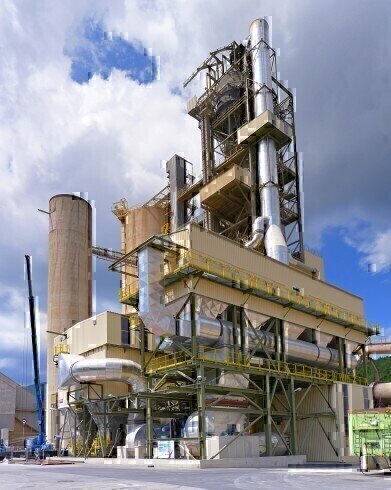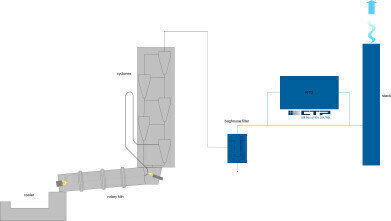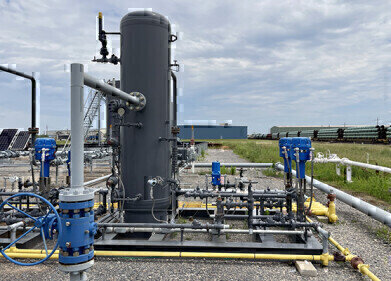Air Clean Up
Air Pollution Control and Odour Removal for the Cement Industry
Jul 28 2011
A new air pollution control system, built by CTP (Austria), a regenerative thermal oxidation process with integrated removal of NOx, destroys virtually all contaminants that occur in the cement production. This system permits the combustion of hazardous waste, thus making the installation of an air pollution control highly profitable.
In the cement industry, the key polluting substances emitted to air are dust, nitrogen oxides, sulphur dioxide, organic compounds, carbon monoxide and ammonia. Toxic gases such as hydrogen chloride, hydrogen fluoride, dioxins and furans can also be emitted.
The type and quantity of air pollution depends on different parameters, e.g. inputs (the raw materials and fuels used) and the type of process applied.
The cement industry is an energy intensive industry with energy typically accounting for about 40 % of production costs. Hereby, the clinker burning process is the most important part of the cement production process in terms of the key environmental issues for cement manufacture: energy use and emissions to air. Additionally, the environment can be affected by noise and odours.
Basically, characteristics of the clinker burning process itself allow the use of waste as raw materials and/or as fuels. Normally, various conventional fuels such as petcoke, coal or heavy oil are used to provide the thermal energy demand required for the process. However, more and more secondary fuels such as scrap tyres, waste oils, plastic waste or biogenic fuels such as sunflower seeds pellets, recycled paper and animal meal are being used.
The most commonly used techniques to reduce the contaminants resulting from the combustion are SCR catalysts for the removal of nitrogen oxides and electrical precipitators for the removal of solid waste and aerosols. However, organic pollutants and other combustible compounds like carbon monoxide cannot be removed with these technologies.
The SCR catalysts are further deactivated by catalyst poisons such as sulphur, lead, arsenic, cadmium, zinc, and phosphor compounds.
CTP has developed, in close cooperation with our customers, an innovative alternative concept to the SCR catalysts: The first regenerative thermal oxidation in the cement sector worldwide!
This is how the system works: before the waste gas leaves the rotary kiln where the cement clinker is produced a selective non-catalytic reduction: SNCR for the removal of NOx is conducted by injecting diluted ammonia solution into the rotary kiln. The waste gas is then passed over cyclones and a baghouse filter for dust removal. After this the waste gas gets into the regenerative thermal oxidiser where it is heated up to 950 ° Celsius and then oxidised. The oxidiser consists of several identical heat exchangers containing ceramic honeycomb blocks which serve as heat storage. By continuously switching between the heat exchangers the energy use is optimized so that practically no additional energy is needed to operate the system.
This, the remarkable concept of the regenerative thermal oxidiser with integrated removal of NOx, patented by CTP, has that competitive edge. The production of cement is odourless and dust-free and emissions are well below their legal limits.
Thomas Lippitz
CTP Air Pollution Control
Schmiedlstrasse 10
8042 Graz
Austria
Phone: +43 316 4101
Fax: +43 316 4101-80
E-mail: office@ctp.at
Web: www.ctp-airpollutioncontrol.com
Events
Apr 18 2024 Shanghai, China
Apr 22 2024 Hannover, Germany
Apr 23 2024 Kuala Lumpur, Malaysia
Apr 24 2024 Sao Paulo, Brasil
May 05 2024 Seville, Spain
















